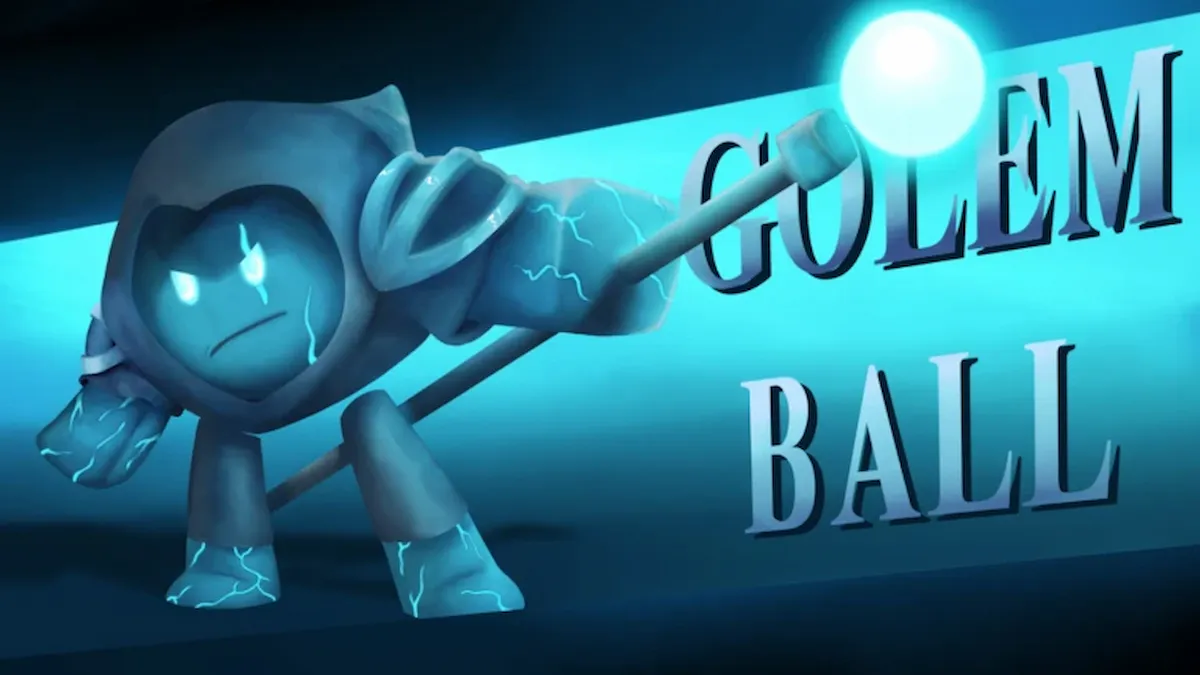At esports LANs there’s an unfortunate conflict between the vibrance and atmosphere of the in-person event and the noise and sound issues they create. Crowds at all levels of esports have in the past been accused of facilitating cheating, distraction, and ruining games wholesale, and even caster calls and in-game audio have been blamed for creating non competitive environments. These incidents are almost universally followed by the call for the use of soundproof booths.
The allegedly flawless solution to the problems caused by unwanted noise, soundproof booths are often seen as a near magical way to block out crowds, casters, and other undesirable sound. But around esports, their use is anything but standard. Numerous tournament organizers and entire games reject their use wholesale, and even their biggest proponents are often open about their difficulties.
Behind the fan calls for their use, the lack of uptake by tournament organizers, and their apparent desirability, the question that begs to be asked is “why isn’t everyone using soundproof booths?” When I started researching this article, I went in with the belief that stage mounted soundproof booths must be a myth. That even with all the technology in the world today, filtering out the sound from thousands of shouting people seemed dubious at best. But the answer I found is more complex and elements affecting the decision to use soundproof booths go beyond their effectiveness and veer more into practical considerations. Let's investigate together the myth of the esports soundproof booth.
Why Soundproof? The 12th Man and Esports
My own questions about soundproofing and its effectiveness comes from a data point from real life. For two years I lived with noisy neighbors, which pushed me to the point where blotting out sound was something I spent a lot of time researching. I came to the quite upsetting realization that physical soundproofing wasn’t really going to be much help. You simply can’t filter out noise of that level from that short a distance by putting things on your walls, or adding material, or any additional items or constructions. Instead, where the real salvation came from was headphones, ear plugs, and white noise machines.
That’s where I first realized that perhaps this idea of soundproof booths might not be as verifiable as we thought. Maybe the idea of a room where sound can’t get in isn’t something that can just be built on a stage and work. The world’s quietest room, the anechoic chamber in Minneapolis, Minnesota has a negative level of background noise, and can cause nausea and discomfort in those who enter. But that’s a static room in a specialized facility, I couldn’t imagine a glass case on a stage would be able to do anything similar. After all, soundproofing had failed for me with two or three people playing loud music next door - why would it work in an arena with thousands of people?
The next question, which is worth answering just for the sake of thoroughness, is why use soundproof booths at all. It could be argued that esports, an analogy of sports to a point, should experience crowds the same way players on a football field, or baseball stadium do - affected by crowd chants and the atmosphere that affords.
To a certain extent, crowds are even encouraged to affect the course of a game. The concept of the 12th man has been around for over 100 years in sports, with certain teams and stadiums even actively encouraging their fans to make playing at their home field an undesirable experience for visiting players. The actual physical effect the noise has is debatable, with some denying and others endorsing its existence, but generally crowds are allowed and encouraged to affect change on the sports field.
But in esports, the issue becomes more definitely tangible because of “crowd cheating.” In theory, crowds in attendance at esports events can give vital information to players with chants, shouts, and signals. This is because the majority of esports games rely on ‘incomplete information - some kind of lack of detail or fog of war. In MOBAs, this is a real fog of war that prevents visibility of opposing players. In Counter-Strike, this is information and knowledge of enemy locations in a more metaphorical fog. Even in real-time strategy games, a lack of information on details such as resource counts, base locations, and scouting patterns are core parts of the gameplay.
As a result, the crowd, who are granted enhanced vision to better enjoy the game, are able to provide information to players they wouldn’t normally have access to. Usually enemy locations. And the examples of this happening are numerous. Such as 100 Thieves being explicitly told player locations against Leviatán during the VALORANT Champions Tour 2023: Americas League. Or the allegations about the crowd whistling to indicate smoked (hidden) enemies during the Dota 2 Lima Major. But it’s not a recent problem - even during StarCraft II: Wings of Liberty, there were allegations about crowds and observers giving information to players. And even as recently as this month at ESL Pro League, crowd cheating has affected the outcome and integrity of esports.
Crowd cheating, then, is a tangible and real issue that seems to affect games on a semi-regular basis. In the wake of these events, there’s almost always a forum thread or Reddit thread, bemoaning the lack of soundproof booths or demanding their use. As a result, we turn to the soundproof booth as one of the possible solutions.
Soundproof Booths and If They Work
Many esports have used soundproof booths to varying degrees of success. Stemming seemingly from Korean StarCraft: Brood war, where the first soundproof booths were utilized by organizations such as GOM TV and OGN. They were effective enough that players complained when they were removed at one stage of Brood War competition, with pro player Seo "XellOs" Ji Hoon still being known for one prominent case of crowd cheating during that time. Unfortunately, even with them in place, their effectiveness is questionable, with complaints still emerging from players.
Simultaneously, IEM and Riot Games became initially notorious for not utilizing soundproof booths for their events. Their reasoning, at least publicly, was that they considered it an obstacle between teams and the crowd, lessening the experience, and that they’re not entirely effective.
Michal “Carmac” Blicharz said as much in a 2014 AMA: “Soundproof booths are not entirely soundproof. All of the booths I have seen or been inside of dampen 70-80% of the noise. If you add a soundproof headset on top, you will only be aware that there's a level of noise in the background. No booth will protect you from knowing that the crowd is roaring. From my experience, the headset alone does more than enough to prevent players from hearing anything crucial. At most IEM stages we have the sound set up in such a way that you cannot understand speech if it's coming out of the speakers.”
Carmac also mentioned that soundproof booths were better for studio environments and cameras, making them more of an issue with televised games. This seems strange when every single esports game is broadcast via streaming (albeit at lower fidelity than any average TV broadcast for most of the industry’s history), but also explains why Korean TV station OGN would have utilized the booths.
Perhaps the most well documented soundproof booths are Valve’s iconic Dota 2 International booths. First used at Gamescom, later at The International in Seattle for many years, they’re also one of the most well documented examples of a soundproof booth in esports. These booths were an iterative process. The first had numerous issues, with heat so intense the insulated cables started to melt, reflections from the glass showing screens to the opponents.
These were improved upon with the TI2-TI4 design, a more square and boxy design, and finally the TI5 designs which we see today. These things are genuinely feats of engineering. They have museum-standard glass. Each glass pane is a different thickness and slightly angled to diffuse sound. And the cavities between the panes are filled with argon, a noble gas which sound finds harder to travel through.
And the effectiveness is notable. We get a first hand perspective of what it’s like inside these Dota 2 soundproof booths, because Valve has conveniently documented many of them in their series of True Sight documentaries. But even these are not entirely soundproof, with crowd noise audible in the background during silent moments. Still, these seem pretty incredible in terms of dampening unwanted noises.
But that’s one set of soundproof booths, built bespoke and as detailed in their post, at great expense. And so difficult to transport and construct that Valve even experimented with not using them in 2022 in Singapore, to mixed results, before bringing them back for 2023 and 2024.
Another problem with working out just how effective soundproof booths are is that it’s very hard to get first hand experience. There are limited chances to go into soundproof booths at events. The reality is, they don’t let people who aren’t referees, techs, or the players and coaches near those things - and rightfully so to prevent other forms of cheating and tampering. And even if you did manage to get in there, there’s no chance the crowd will be cheering for you.
Interviews with players often hint at the effectiveness of soundproof booths, but again there’s still always mentions of the crowd and complaints. When asked flat out pros do prefer the soundproof booths or other methods, such as headphones, the majority choose the booths. Ironically, players are not consistent here. Some will say they can still hear the crowd and then state they prefer the booths. Interestingly, the League of Legends pro, Eugene “Pobelter” Park, one of the few players whose career is long enough to have attended LoL events with soundproof booths, suggests he preferred booths until the technology caught up with them.
The Science and Industry of Soundproofing
So with little direct evidence that soundproof booths work, and even anecdotal evidence all over the place, it’s time to turn to science and industry to try and answer the question. Soundproofing is a core part of architecture, design, and living spaces in the modern world, and as a result there’s thousands, perhaps millions of companies globally who make soundproofing solutions. But it's here where we run into yet another roadblock.
One issue with researching soundproofing is, as mentioned with Valve’s example, most soundproof booth solutions for esports are bespoke made. There’s simply not the demand for a company to be producing soundproof booths at scale for esports. As a result, most commercial options are focused on static use within a structure. Office soundproof booths and home-based solutions that aren’t designed to have hundreds or thousands of screaming fans around them.
Another issue is that soundproofing companies are disincentivized from presenting their products as anything other than a perfect solution. The mire of the SEO optimized internet, the commercialization of information, the desire to use the internet as a selling platform, even in informational articles, means that even the most basic questions such as “does soundproofing work” are completely buried under sales pitches and assurances of working products.
Which leaves us, inevitably, with science. Basic understanding of sound presented at lower level education paints it as waves, as vibrations within the air. Like many things, it’s a bit more complicated than that. The science of sound is known as acoustics, and entire buildings are designed around improving acoustics. Within acoustics, unwanted sound is defined as “noise,” and noise reduction is often antithesis to “good” acoustics.
A difficulty in researching soundproofing and acoustics is perhaps tied to the broadness of the subject. Rober Bruce Lindsay’s widely accepted wheel of acoustics is a demonstration of the broad number of fields within acoustic, which range from hard sciences to the humanities. As a result, an ideal acoustician for soundproofing in esports needs both the fundamental knowledge of physical acoustics, but also the much more specialized elements within engineering, architectural soundproofing, and knowledge of elements such as musical and theater acoustics, and beyond.
Another of the fundamental issues of soundproofing within an arena or venue is that oftentimes it’s built to do just the opposite. Smaller scale esports events were and continue to be held in auditoriums, sound stages, theaters, music venues - places often designed with acoustic fidelity in mind. The plan, when building and designing many of these places, is that sound should carry over long distances. Even in arenas and sporting venues, high-quality acoustics are considered paramount because the alternative use of the venue is almost always music and concerts. And of course, the aforementioned 12th man situation, where crowd noise is encouraged.
While researching this article, I found the overlap within acoustics professionals is surprisingly thin on the ground. Specialization apes a broad knowledge base, and while I could find scholarly articles on acoustics, and on soundproofing, it was hard to find much on the idea of soundproofing a structure within an acoustically rich environment. The closest comes from musical performers, who for years have used monitor feeds of their own performance to prevent feedback and crowd noise. They’re not in a soundproof booth, because performance is symbiotic with the crowd. But when dampening is needed, they just headphones and a monitor mixer.
The Alternatives
Once again then, we’re left without a definitive answer. Anecdotal evidence suggests that sometimes soundproof booths work, and sometimes they just don't. The ones that work more consistently cost huge amounts. And even then, you can still hear crowds and outside noise to a certain extent.
Which leaves us looking for alternatives. Going back to my anecdotal evidence and experience with noisy neighbors, it was perhaps comforting to hear that Riot Games utilizes a software solution to create what in essence must be white noise. White, brown, and pink noise are all utilized in noise reduction and used in conjunction with headphones and earplugs can effectively drown out outside noise, but still require an input from a game.
Even so, this can be rendered ineffective by a sufficiently loud crowd, as Mads "Broxah" Brock-Pedersen explained, with the white noise being ineffective at the 2018 LEC Summer Finals being his example. Ultimately, it seems like the best soundproofing solution is a little bit of everything. Headphones, earplugs, white noise, a soundproof booth, and whatever else you can manage.
Well, actually that’s untrue. Unfortunately, the most effective soundproofing is to not have players there at all. Or in a room in the back of the arena. Having attended numerous live events, from small tournaments, to the massive Internationals, the most effective way to not hear anything is to just be two or three sections away from the crowd. Games like Age of Empires have effectively done this, but only on smaller events. And really, it almost defeats the point of the event at all. After all, ESL FACEIT Group and Riot Games have long avoided using soundproof booths so as not to create a barrier between players and audience.
Which brings us to another reality of soundproof booths - that Riot and ESL’s reasoning for not using it might actually be justification after the fact. We’ve already seen that bespoke soundproofing options are expensive. Few organizations spring for them consistently, and many of those, especially on the Korean side of things, no longer operate esports at all. Perhaps one reason for not using soundproof booths is both their limited effectiveness and the fact they’re very expensive for a limited result.
In the AMA with Carmac where he talked about soundproof booths, the ESL staffer said that the booths were 70-80% effective, without elaborating on how effective headphones and speakers were. If both were similarly effective, the cheaper option would always be preferable. Especially when during the same AMA Carmac talked about sustainability and costs.
So if they’re expensive, have limited use, and only a few organizations can manage to effectively use them, why even use soundproof booths at all? Perhaps it's for the pageantry. A definitive image of two booths of opposing players. When Valve removed its Soundproof Booths for 2022, fans complained not just about the competitive factors, but that it didn’t feel like TI without them. When it’s fans and spectators that are seemingly calling for the booths in forum posts and reddit threads, more than the players themselves, maybe the real myth of soundproof booths is that they’re anything more than set dressing.

 3 months ago
139
3 months ago
139








![Anime Reborn Units Tier List [RELEASE] (November 2024)](https://www.destructoid.com/wp-content/uploads/2024/11/anime-reborn-units-tier-list.jpg)